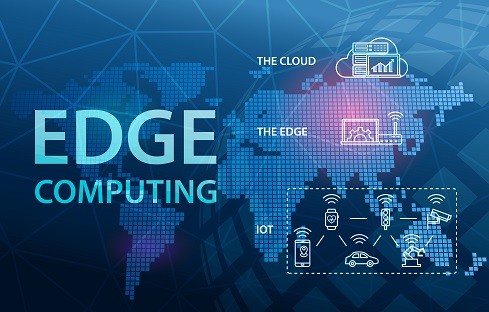
-
Table of Contents
Securing devices at the edge: Empowering the future of computing.
Introduction
Edge computing refers to the practice of processing and analyzing data closer to the source, at the edge of the network, rather than relying on a centralized cloud infrastructure. This approach offers several benefits, including reduced latency, improved bandwidth efficiency, and enhanced privacy. However, with the rise of edge computing, there is a growing need for robust edge security measures to protect devices at the edge. Edge security involves implementing various techniques and technologies to safeguard edge devices from potential threats, such as unauthorized access, data breaches, and malware attacks. These security measures aim to ensure the integrity, confidentiality, and availability of data and services at the edge, thereby enabling organizations to leverage the advantages of edge computing while maintaining a secure environment.
The Importance of Edge Security in Protecting Devices at the Edge
Edge Computing and Edge Security: Protecting Devices at the Edge
In today’s digital age, where technology is advancing at an unprecedented pace, the concept of edge computing has emerged as a game-changer. Edge computing refers to the practice of processing data closer to the source, at the edge of the network, rather than relying on a centralized cloud infrastructure. This approach offers numerous benefits, such as reduced latency, improved performance, and enhanced privacy. However, with the rise of edge computing, the need for robust edge security has become more critical than ever before.
Edge security plays a vital role in protecting devices at the edge, ensuring that sensitive data remains secure and safeguarding against potential cyber threats. As more devices are connected to the edge, including Internet of Things (IoT) devices, the attack surface expands, making it imperative to implement effective security measures. Without proper edge security, these devices become vulnerable to attacks, putting both individuals and organizations at risk.
One of the primary reasons why edge security is crucial is the decentralized nature of edge computing. Unlike traditional cloud computing, where data is stored and processed in centralized data centers, edge computing distributes data processing across multiple devices and locations. While this decentralization offers advantages in terms of speed and efficiency, it also introduces new security challenges. Each edge device becomes a potential entry point for attackers, making it essential to have robust security mechanisms in place.
Another key aspect of edge security is the protection of data in transit. With edge computing, data is often transmitted between devices and the cloud, creating potential vulnerabilities. Without proper encryption and authentication protocols, this data can be intercepted and manipulated by malicious actors. Implementing secure communication channels and encryption algorithms is crucial to ensure the integrity and confidentiality of data as it travels between devices and the cloud.
Furthermore, edge security plays a critical role in safeguarding against distributed denial-of-service (DDoS) attacks. These attacks overwhelm a network or system with a flood of traffic, rendering it inaccessible to legitimate users. With edge computing, the distributed nature of devices makes them susceptible to such attacks. By implementing robust edge security measures, organizations can detect and mitigate DDoS attacks, ensuring uninterrupted service availability.
In addition to protecting against external threats, edge security also addresses internal vulnerabilities. Edge devices, such as IoT devices, often have limited computing resources and may lack built-in security features. This makes them attractive targets for attackers looking to exploit vulnerabilities. By implementing edge security measures, organizations can mitigate these risks and ensure that devices at the edge are protected against both external and internal threats.
To effectively protect devices at the edge, organizations must adopt a multi-layered security approach. This approach involves implementing a combination of physical security measures, network security protocols, and secure software development practices. By combining these layers of security, organizations can create a robust defense system that safeguards devices and data at the edge.
In conclusion, as edge computing continues to gain traction, the importance of edge security cannot be overstated. Protecting devices at the edge is crucial to ensure the integrity, confidentiality, and availability of data. With the decentralized nature of edge computing and the increasing number of connected devices, implementing robust edge security measures is essential. By doing so, organizations can mitigate the risks associated with edge computing and confidently embrace the benefits it offers.
Best Practices for Securing Edge Computing Devices
Edge Computing and Edge Security: Protecting Devices at the Edge
In today’s digital age, where data is generated at an unprecedented rate, edge computing has emerged as a powerful solution to process and analyze data closer to its source. By bringing computation and data storage closer to the devices that generate and use it, edge computing offers numerous benefits, including reduced latency, improved performance, and enhanced privacy. However, with these advantages come new challenges, particularly in terms of security. In this article, we will explore best practices for securing edge computing devices, ensuring that they remain protected from potential threats.
One of the fundamental aspects of securing edge computing devices is to establish a robust authentication mechanism. As these devices are often deployed in remote locations or on the edge of a network, they are more susceptible to unauthorized access. Implementing strong authentication protocols, such as two-factor authentication or biometric authentication, can significantly enhance the security of these devices. Additionally, regularly updating and patching the firmware and software of these devices is crucial to address any vulnerabilities that may arise.
Another critical aspect of edge security is the encryption of data in transit and at rest. As data is transmitted between edge devices and the central infrastructure, it is essential to ensure that it remains confidential and cannot be intercepted or tampered with. Implementing secure communication protocols, such as Transport Layer Security (TLS), can provide end-to-end encryption, safeguarding the data from potential eavesdropping or man-in-the-middle attacks. Furthermore, encrypting data at rest on edge devices, using strong encryption algorithms, adds an extra layer of protection against unauthorized access.
Physical security is equally important when it comes to securing edge computing devices. These devices are often deployed in harsh environments or remote locations, making them vulnerable to physical tampering or theft. Employing physical security measures, such as tamper-evident seals, secure enclosures, or surveillance cameras, can help deter potential attackers and ensure the integrity of the devices. Additionally, implementing remote monitoring and management capabilities allows for real-time detection of any physical breaches or anomalies, enabling swift response and mitigation.
Regular monitoring and auditing of edge computing devices are essential to detect and respond to any security incidents promptly. By implementing robust logging mechanisms and security information and event management (SIEM) systems, organizations can gain visibility into the activities and events occurring on these devices. This enables the identification of any suspicious behavior or unauthorized access attempts, allowing for immediate action to be taken. Furthermore, conducting periodic security assessments and penetration testing helps identify any vulnerabilities or weaknesses in the edge computing infrastructure, enabling proactive remediation.
Lastly, fostering a culture of security awareness and training among employees is crucial for securing edge computing devices. Human error remains one of the leading causes of security breaches, and educating employees about the importance of following security best practices can significantly reduce the risk of incidents. Regular training sessions, simulated phishing attacks, and clear security policies and guidelines can help instill a security-conscious mindset among employees, ensuring that they remain vigilant and proactive in protecting edge computing devices.
In conclusion, securing edge computing devices is of paramount importance in today’s interconnected world. By implementing robust authentication mechanisms, encrypting data in transit and at rest, ensuring physical security, monitoring and auditing devices, and fostering a culture of security awareness, organizations can effectively protect their edge computing infrastructure. As the adoption of edge computing continues to grow, it is crucial to prioritize security to reap the full benefits of this transformative technology.
Exploring the Role of Edge Computing in Enhancing Device Security
Edge Computing and Edge Security: Protecting Devices at the Edge
In today’s digital age, where the Internet of Things (IoT) is becoming increasingly prevalent, the need for robust device security has never been more critical. With billions of connected devices transmitting and receiving data, ensuring the protection of these devices and the data they generate is of utmost importance. This is where edge computing comes into play, offering a solution that enhances device security and safeguards against potential threats.
Edge computing, in simple terms, refers to the practice of processing data closer to the source, at the edge of the network, rather than relying solely on centralized cloud servers. By bringing computation and data storage closer to the devices themselves, edge computing reduces latency, improves response times, and enhances overall performance. However, one of the often-overlooked benefits of edge computing is its ability to enhance device security.
Traditional cloud-based architectures have their limitations when it comes to device security. With data being transmitted to and from the cloud, there is always a risk of interception or unauthorized access. Edge computing addresses this concern by keeping sensitive data within the local network, minimizing the exposure to potential threats. By processing data locally, edge computing reduces the attack surface and provides an additional layer of protection against cyber-attacks.
Furthermore, edge computing enables real-time analysis and decision-making, which is crucial for device security. With the ability to process data at the edge, devices can quickly identify and respond to potential security threats. For example, a connected security camera can analyze video footage locally and immediately alert the user if it detects any suspicious activity. This real-time analysis not only enhances device security but also reduces the reliance on cloud-based services, ensuring uninterrupted operation even in the event of a network outage.
Another aspect of edge computing that contributes to device security is its ability to handle data encryption and decryption locally. With sensitive data being processed and stored at the edge, encryption and decryption can be performed closer to the source, minimizing the risk of data breaches during transmission. This local encryption also reduces the computational burden on the device, allowing for more efficient and secure data handling.
Moreover, edge computing enables the implementation of access control mechanisms at the edge of the network. By enforcing access control policies locally, devices can ensure that only authorized users or systems can interact with them. This prevents unauthorized access and reduces the risk of malicious actors gaining control over the device. Additionally, edge computing allows for the implementation of fine-grained access control, where different levels of access can be granted based on user roles or device capabilities.
In conclusion, edge computing plays a vital role in enhancing device security in the IoT era. By processing data closer to the source, edge computing reduces latency, improves response times, and enhances overall performance. However, its impact on device security should not be overlooked. Edge computing keeps sensitive data within the local network, minimizes the attack surface, and enables real-time analysis and decision-making. It also allows for local encryption and decryption, as well as the implementation of access control mechanisms at the edge. With these capabilities, edge computing provides a robust solution for protecting devices at the edge and ensuring the security of the data they generate.
Conclusion
Edge computing and edge security are crucial components in protecting devices at the edge. As more devices are connected to the internet, the need for efficient and secure data processing at the edge of the network has become increasingly important. Edge computing enables data processing and analysis to be performed closer to the source, reducing latency and improving overall system performance. However, this also introduces new security challenges, as edge devices are often more vulnerable to attacks. Edge security focuses on implementing robust security measures to protect these devices from unauthorized access, data breaches, and other cyber threats. By combining edge computing with strong security protocols, organizations can ensure the safety and integrity of their devices and data at the edge of the network.




